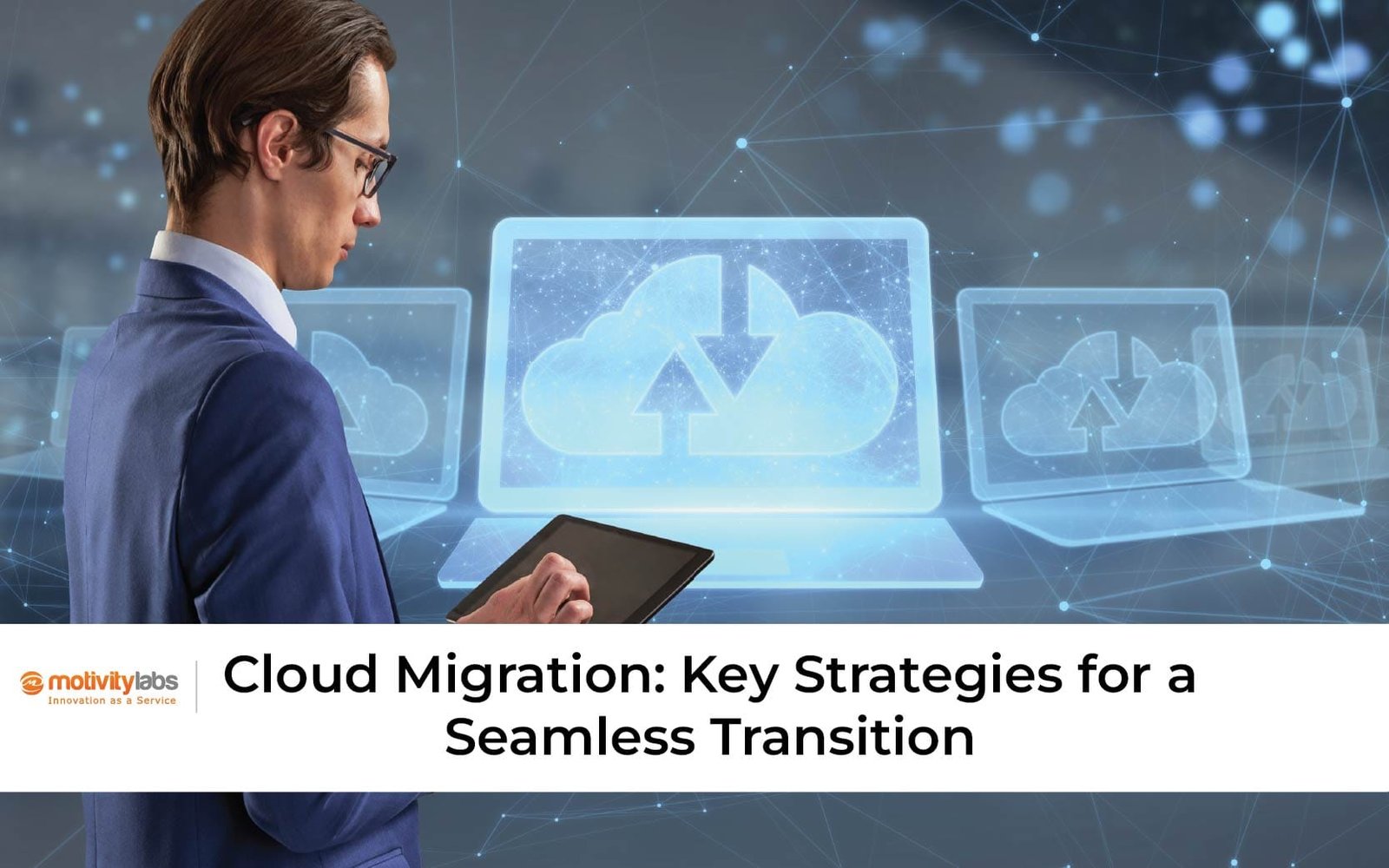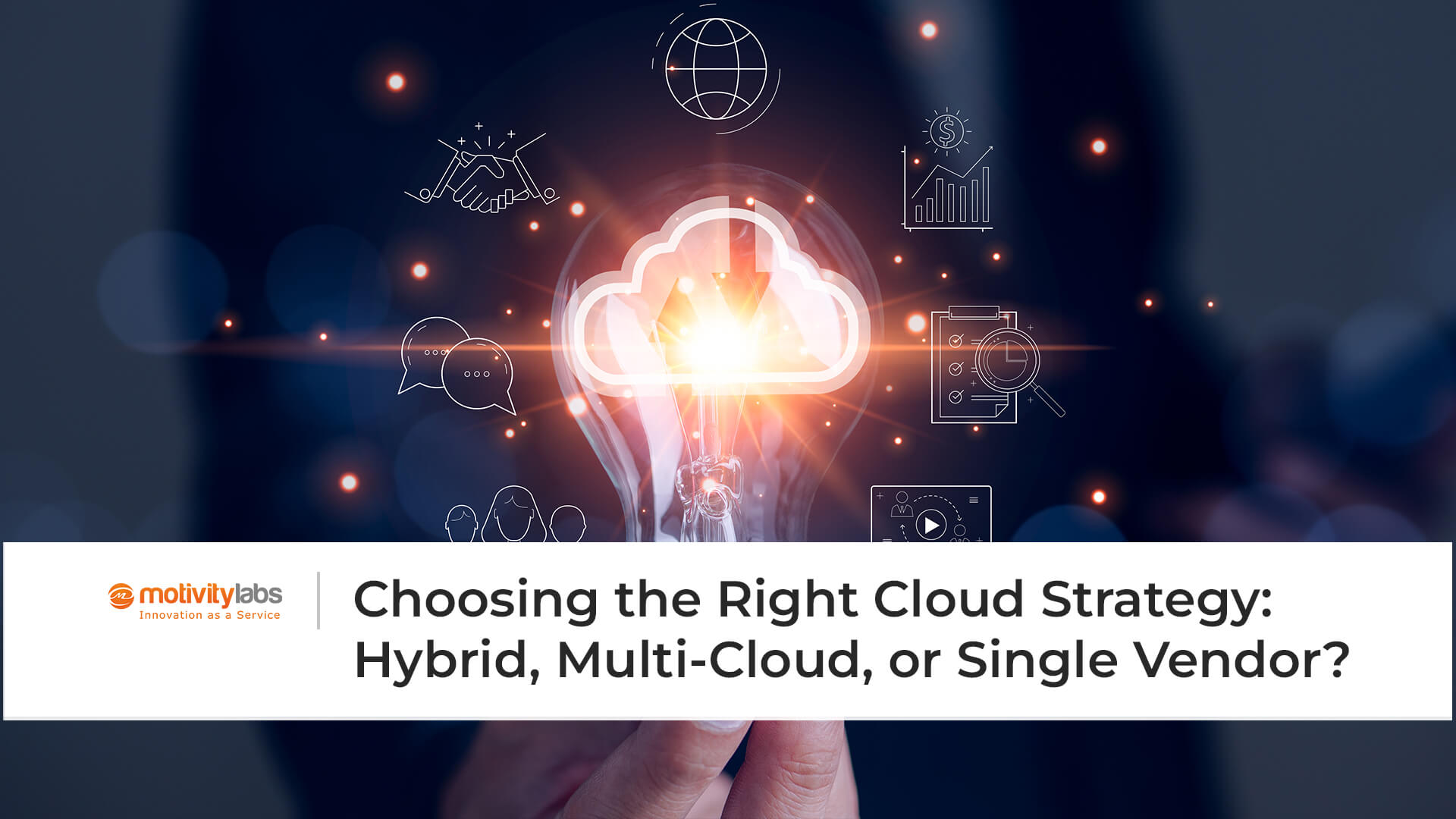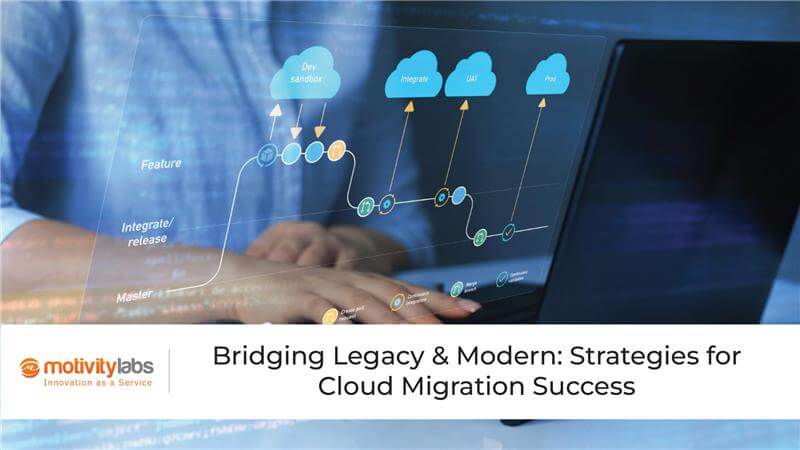Table of Contents
Cloud Migration: Key Strategies for a Seamless Transition
Cloud migration is rapidly becoming a cornerstone of digital transformation for organizations looking to modernize, innovate, and scale efficiently. As businesses seek greater flexibility, reduced infrastructure costs, and faster deployment cycles, moving to the cloud offers both a competitive edge and operational resilience. But despite its potential, cloud migration is not a plug-and-play endeavor. It requires thoughtful planning, robust execution, and strategic alignment with business goals to be successful.
Cloud migration is not a simple “lift and shift” of applications. It is a significant shift that impacts every part of your business, from infrastructure and operations to team culture and customer experience. Additionally, like any transformation, it requires a well-structured plan.
So, how do you ensure your move to the cloud is smooth, efficient, and aligned with your business goals? Here are the key strategies that make your cloud migration seamless and successful.
Define Clear Business Objectives
Your cloud journey starts with a purpose. Before choosing providers or drawing architecture diagrams, define your business goals. Are you seeking to optimize capital expenditure, facilitate remote collaboration, enhance data analytics capabilities, or improve disaster recovery processes?
Your migration roadmap must closely align with these objectives. Establishing clear KPIs, such as application uptime, cost savings, and deployment speed, is essential. These metrics will enable you to assess the ROI of your cloud investment and ensure that your project remains on course.
Assess and Audit Your Existing Infrastructure
Think of this as your cloud migration blueprint. Start by evaluating your current IT landscape. Identify application dependencies, data volumes, licensing requirements, performance benchmarks, and usage patterns. Pay close attention to legacy systems. Some may be cloud-ready, while others might require re-engineering or retirement.
This assessment will help you categorize workloads into:
- Ready to migrate
- Needs optimization
- Replace or sunset
An accurate audit helps you plan timelines, resource allocation, and budget effectively. It helps avoid surprises mid-migration.
Choose the Right Cloud Model
Cloud is not one-size-fits-all. You have four primary models to consider:
- Public Cloud: Cost-effective, scalable, ideal for variable workloads.
- Private Cloud: High control, enhanced security, better for sensitive data.
- Hybrid Cloud: Mixes public and private for flexibility and compliance.
- Multi-Cloud: Uses multiple providers to avoid lock-in and increase resilience.
Your choice depends on your data sensitivity, regulatory requirements, budget, and performance goals. Many businesses start with a hybrid or multi-cloud approach to balance agility and control.
Select the Right Cloud Provider
Choosing the right provider is not just about pricing. It is about partnership. Consider providers like AWS, Microsoft Azure, and Google Cloud, but evaluate them based on:
- Security Protocols
- Compliance certifications
- Service-level agreements (SLAs)
- Ecosystem integrations
- Global availability
- Support capabilities
Furthermore, explore value-added services like AI/ML platforms, DevOps tools, and database management. Choose a provider whose roadmap aligns with your innovation strategy.
Prioritize Security and Compliance from Day One
Security is not a post-migration checkbox. It is foundational. As you shift to the cloud, re-examine your security posture. Implement:
- Role-based access control (RBAC)
- End-to-end data encryption
- Multi-factor authentication
- Logging and monitoring tools
- Compliance mapping to standards like GDPR, HIPAA, ISO 27001
Modern cloud environments offer native security features, but you must configure and manage them wisely. Partnering with security experts can ensure your cloud meets both industry and regulatory standards.
Design a Phased Migration Strategy
Do not move everything at once. Use a phased approach to reduce risk and allow for testing and adaptation. Migrate in waves, starting with non-critical workloads. This gives your team space to adjust to new tools, processes, and architecture.
Typical migration approaches include:
- Rehosting: Quick lift and shift.
- Replatforming: Some code or configuration changes.
- Refactoring: Rebuilding applications using cloud-native frameworks.
The complexity and importance of each application should guide its migration strategy. Remember, every phase is an opportunity to learn and improve.
Leverage Automation and DevOps Practices
The cloud thrives on automation. Manual provisioning and deployments are error-prone and slow. Use Infrastructure as Code (IaC) tools, such as Terraform or AWS CloudFormation, to automate the setup and management of your infrastructure. Adopt DevOps principles to streamline application delivery through CI/CD pipelines.
Automation tools help in:
- Spinning up environments
- Managing patches and updates
- Auto-scaling
- Monitoring and alerting
The result? Faster rollouts, fewer errors, and reduced operational overhead.
Test, Validate, and Monitor Continuously
Testing is your safety net after every migration phase. Run performance benchmarks, stress tests, and functional validations. Ensure your applications behave as expected in their new environment. Cloud-native monitoring tools like Amazon CloudWatch or Azure Monitor provide real-time visibility.
Beyond testing, set up dashboards and alerts for:
- CPU and memory usage
- Network traffic
- Application errors
- Security incidents
This proactive approach keeps performance optimal and issues under control.
Upskill Your Workforce
Technology is only as effective as the people behind it. Empower your team with the suited training and certifications. Platforms like AWS, Microsoft Azure, and Google Cloud offer training courses in areas such as cloud architecture, security, DevOps, and machine learning.
Encourage a cloud-first mindset across departments, from developers to decision-makers. Build cross-functional teams that can adapt quickly to new challenges and innovations. A knowledgeable team ensures long-term cloud success.
Establish Cloud Governance and Cost Management
The cloud gives flexibility, but without control, it can spiral. Set up governance policies to manage:
- Identity and Access
- Resource provisioning
- Budget tracking
- Data residency and sovereignty
Also, implement cost visibility tools like AWS Cost Explorer or Azure Cost Management. Monitor usage patterns and right-size your resources regularly. The goal is to avoid waste while maximizing value. Strong governance builds confidence and keeps your CFO happy.
Consider a Cloud Center of Excellence (CCoE)
One bonus strategy that leading enterprises often adopt is creating a Cloud Center of Excellence. A CCoE is a dedicated cross-functional team that owns cloud adoption, innovation, governance, and best practices.
It ensures consistency, accelerates innovation, and institutionalizes cloud knowledge across the organization. Whether formal or ad hoc, a CCoE becomes your in-house think tank for cloud success.
Build the Future with Motivity Labs
Cloud migration is more than a technical lift. It is a strategic transformation that empowers innovation, resilience, and long-term growth. To get it right, you need a clear vision, the right tools, and reliable partners to guide you through the process. That is where Motivity Labs comes in.
Motivity Labs is more than just a cloud services provider. They are transformation enablers. With years of experience supporting businesses across industries, the team at Motivity Labs offers comprehensive, end-to-end cloud solutions, including:
- Cloud readiness assessments
- Migration strategy and execution
- Security and compliance frameworks
- Application modernization
- DevOps automation
- Performance optimization
Security and compliance are embedded into every step of your cloud journey. From identity and access management to cloud security posture management, you get the support needed to stay aligned with industry standards like GDPR and HIPAA. Our team implements robust network security, data protection, threat detection, and end-to-end encryption strategies to safeguard your assets in the cloud.
Whether you are just getting started or scaling a global infrastructure, Motivity Labs is here to support your journey. We equip you with the expertise and confidence to unlock the full potential of the cloud—securely, efficiently, and with complete clarity.



